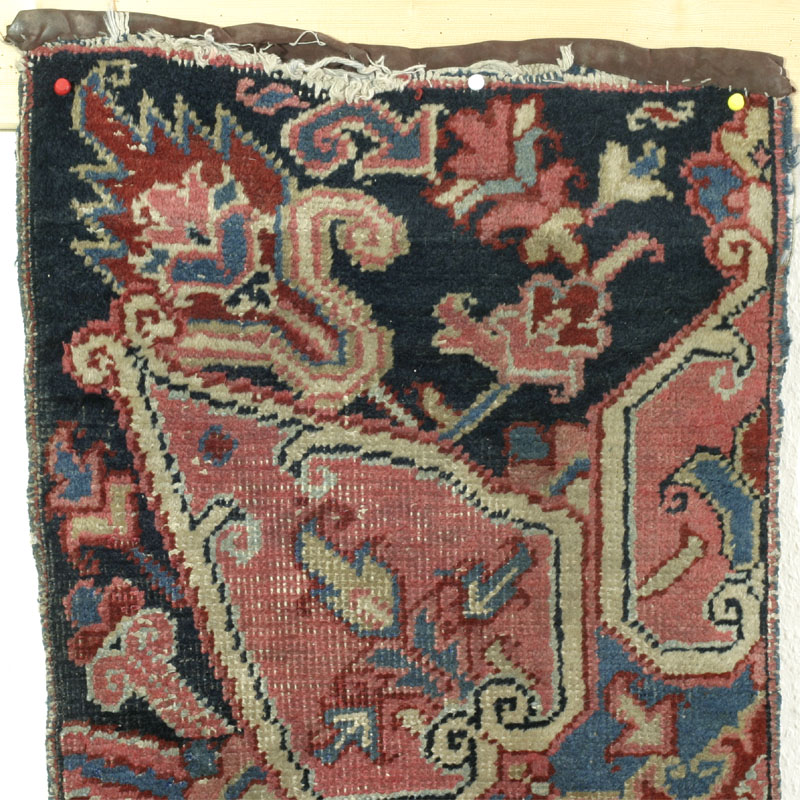Excellent old Heriz wagireh with a palette of various red and blue shades. While the type of leaves and palmettes and the coarse heavy weave are unmistakably Heriz, the curls motif at the ends and base of the heart-shaped petals that would in a full rug constitute the outer part of an eight-point medallion is unusual. Curly ends also appear in the small half medallion in the top stripe. I like the arrangement of the diagonal heart-shaped petal and the large palmette flower behind it—this is certainly a feature only found in wagirehs and not in the finished rug. Since the palmette is symmetrical (mirrored across an imaginary diagonal running through its centre) all necessary design information is in one half. Border information is absent (presumably the types of border used across carpets were not varied as much as the field design).
I guess this Heriz wagireh was made some time between 1890 and 1920.
Coarse weave with heavy cotton warps. Knotting density is 6.v,6.h = 36 kpsi (24.h/dm, 25.v/dm = 600 knots per sqare dm) Two shoots of cotton wefts, heavier after alternate rows of knots. One straight one sinous shoot to produce the fully depressed weave. Literature tells me that the Heriz weave uses symmetrical knots - this is hard to ascertain due to the strong depression. Sides have a blue overcast, the ends have been secured with a brown fabric stitched over - unravelling a bit at the bottom.
Mostly natural dyes, a greyish yellow used, for example, in the base of the palmette (the colour similar to faded Fuchsin) was probably once a green, but I am not entirely sure. Several of madder-based shades of red and rose, Several shades of indigo blue from very dark (ground) to sky-blue
The condition is not bad, but there are signs of medium to stronger wear to the pile, with the foundation showing a bit in the central area. The lower end is unraveling a bit and the brown fabric should be refitted or replaced. The wagireh is a bit dirty, could do with a wash.



